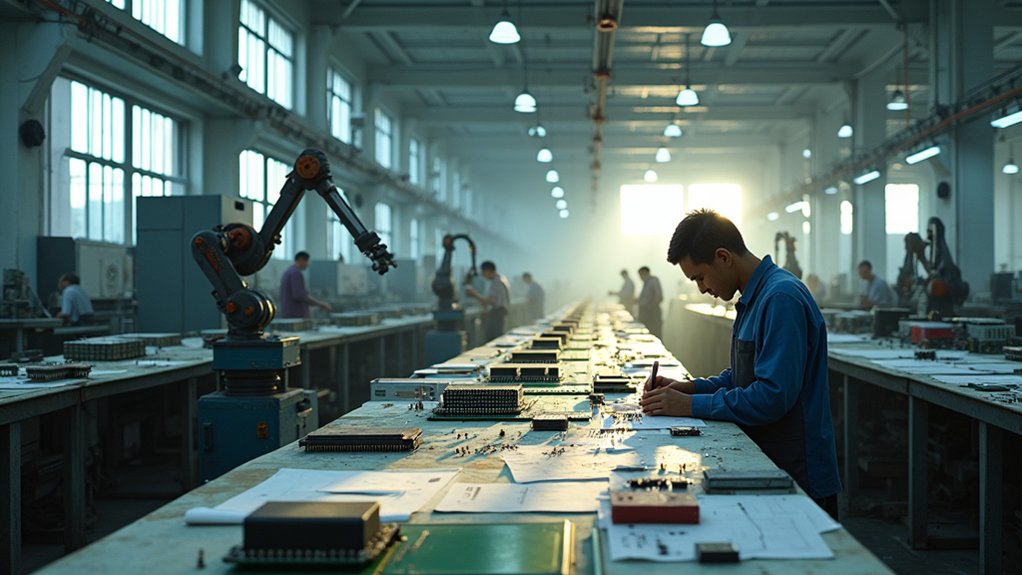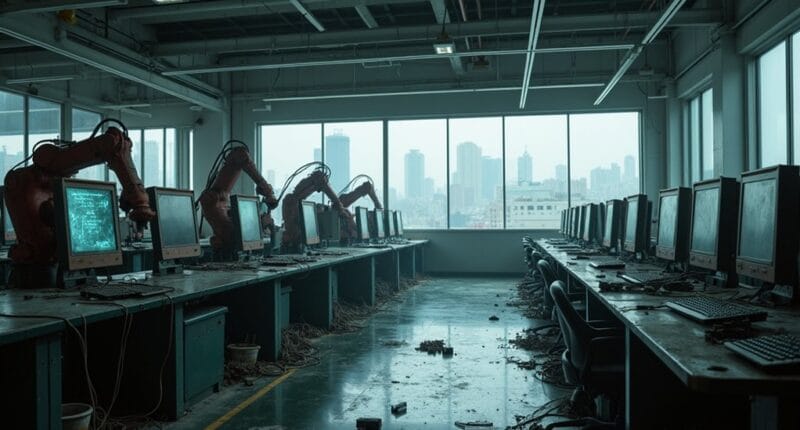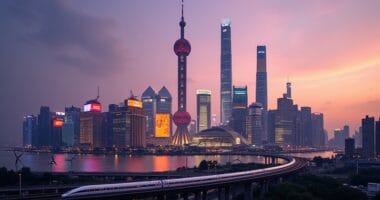China’s grand manufacturing makeover hit major snags. The centralized planning approach flopped, creating a mismatch between lofty goals and reality. Economic troubles, including mounting debt and real estate woes, didn’t help. Neither did the massive skills gap in tech workers, heavy reliance on foreign components, and growing international tensions. Local governments wasted resources chasing unrealistic targets. The devil, as they say, lurks in those pesky details.

While China’s ambitious Made in 2025 initiative promised to transform the nation into a high-tech manufacturing powerhouse, the grand plan has largely fallen flat. The reality check has been harsh, with a glaring mismatch between centralized planning and actual industry needs. Those shiny quantitative targets? They ended up prioritizing numbers over genuine technological transformation. Recent events have shown that central planning has not been the historical driver of China’s economic success.
The timing couldn’t have been worse. As China pushed for industrial upgrading, economic headwinds hit hard. Slowing growth, mounting corporate debt, and a wobbly real estate market created a perfect storm. Add in rising youth unemployment and an aging workforce, and you’ve got a recipe for trouble. Foreign companies, once enthusiastic partners in China’s rise, started heading for the exits – taking their valuable expertise with them. Studies revealed that direct government support actually failed to boost productivity growth between 2007-2018.
The skills gap became impossible to ignore. China’s education system simply wasn’t churning out enough tech-savvy workers for advanced manufacturing. Sure, robots were replacing some workers, but who would program and maintain those robots? The shortage of AI experts, robotics specialists, and smart manufacturing professionals became painfully obvious. Meanwhile, retraining programs for displaced workers were nowhere to be found.
China’s tech ambitions hit a painful roadblock: not enough skilled workers to program the robots meant to power its future.
The technological challenges proved even more stubborn. Despite throwing mountains of money at R&D, China remained dependent on imported components – especially in critical areas like semiconductors. Weak intellectual property protection didn’t help, turning innovation into a game of whack-a-mole with counterfeits. Private sector champions failed to emerge to challenge global leaders.
Then came the international pushback. U.S. export controls slammed the door on advanced technology access. Trade tensions escalated, costs soared, and foreign partners grew increasingly wary of sharing their tech secrets.
Local governments, in their enthusiasm to hit targets, engaged in wasteful spending sprees that created more problems than solutions. Government-guided funds struggled to attract quality private sector partners, and resources were squandered on projects that looked good on paper but delivered little real progress.
The gap between ambition and reality, it turns out, was expensive indeed.





